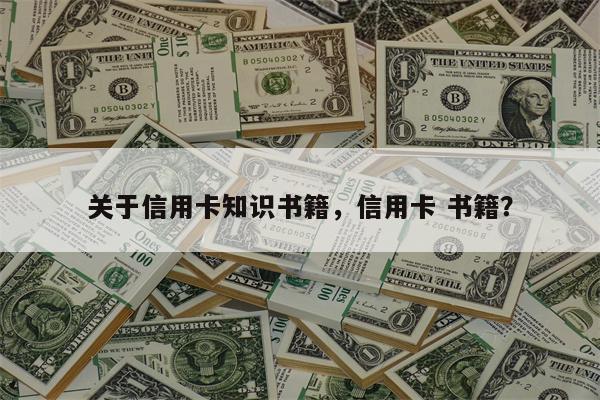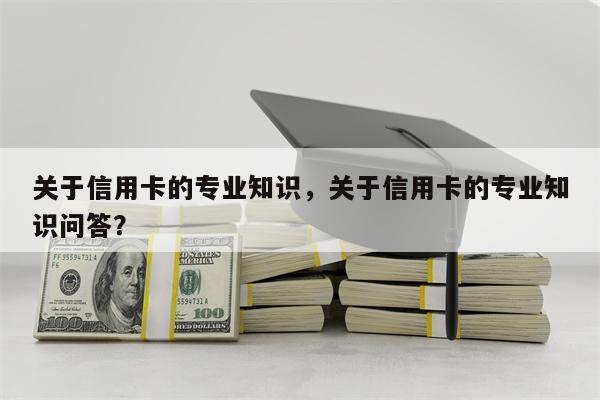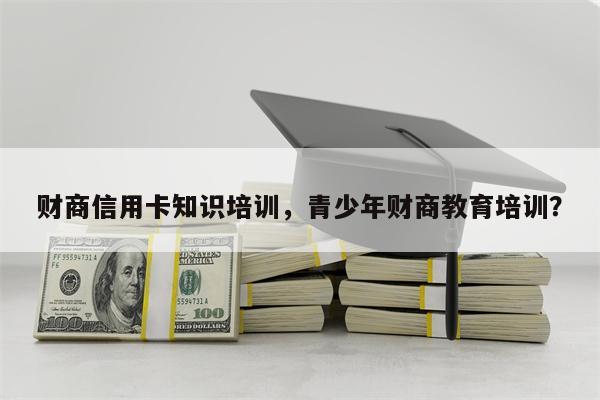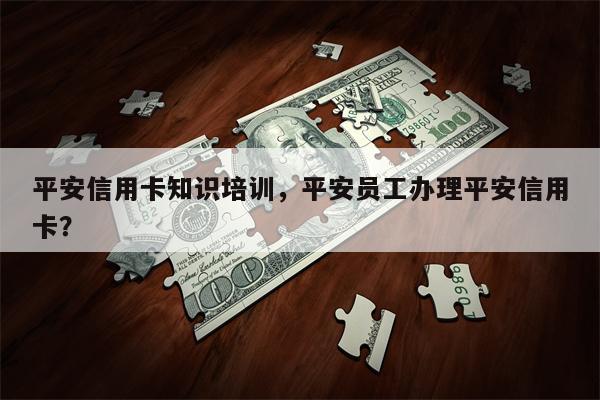信用卡冷门小知识,99%的人都不知道
; 今天的扫盲篇,主要是介绍两个概念,一个是信用卡,一个是传统的消费贷款,这两者虽说都是消费借款的一种,但是本质上还是有区别的。
接下来,咱们从几个角度来详细介绍一下。
首先,来看看使用范围
1、信用卡:信用卡并没有专门的使用范围,你可以在任意可刷卡的地方刷卡消费,同时还可以进行网上交易,甚至可以拿它来取现什么的,反正只要你刷完后按时还款就行了。
2、消费贷款:申请人在向银行申请消费贷款的时候,通常都选择了贷款的用途,也就是说,这类贷款只能专款专用,你选择的使用范围是买车,就只能买车用,选的是装修,就只能用来装修,而拿它去做别的用途,都是不行的。
接着,来看看两者成本
1、信用卡:这个所谓的成本其实指的是信用卡的免息期,很多卡友都知道,信用卡的免息期从18天到56天不等,用的好的话,你在56天内的透支消费都是免费的,只要在最后还款日全额还款,就无需支付其它费用。
2、消费贷款:作为一个贷款产品,银行放贷都是要收利息的,所以消费贷款不存在什么免息期不免息期的,只要你申贷成功,从借款当天起,就得按约定计算利息,并且还要每期按时还款,借款成本不可规避。
然后,看看申请的便利性
1、信用卡:申请非常便利,且申请渠道有多种,客户可以通过银行线下网点、银行官方网站以及微信、手机app等途径申请。在申请过程中,只需要提供工作证明、收入证明等申请材料即可,审批时间相对较短,最多两个星期就可以出结果。
2、消费借款:申请起来比较麻烦,流程繁琐,审批严格且审批时间通常较长。很多时候申请消费借款还需要申请人提供较多的证明文件,甚至提供抵押、担保等等。
最后,介绍一下还款方式
1、信用卡:还款方式多样,钱多的话你可以全额还款,觉得还款有压力可以选择分期还款或者是按最低额还款,这样让持卡人还款更加便利。
2、消费借款:还款方式只有一种,那就是必须固定按期还款,一旦少还或者不还就会上人行征信的黑名单。
招商young卡
(每月首笔取现免手续费;取现额度100%;生日月双倍积分;仅限30岁以下客户申请)

关于信用卡的知识?
1、信用卡就是可以透支使用的,可以用来支付费用以及一些代理缴费功能的银行卡
2、信用卡办理您可以在柜台领取申请表然后附上您的财力证明(工资证明,房产,车产,证卷,股票等)您的身份证复印件并且已成年即可申请办理
3‘信用卡的好处是方便消费,您只要带一张卡就可以在支持刷卡的商店消费(刷卡消费只要按时还款不会有附加费用),而且能刷卡的商店都是经过银行认可的,至于弊端就是一定要注意按时还款否则可能会产生不必要的利息滞纳金等费用同时会影响您的个人争信。
4’信用卡存款是没有利息的,而且有的信用卡取您的个人存款也是要收手续费(也有不收的),信用卡透支取现是会收收费费和利息的
总之 信用卡主要是用来消费的 如果您使用信用卡消费并按时还款那么不会产生您消费金额以外的费用同时给您带来便利
求:关于信用卡的研究文献(中外文均可)
1. Ausubel, Lawrence M., The Failure of Competition in the Credit Card Market, American Economic Review, 1991, 81(1):50-81
2. Ausubel, Lawrence M., Adverse Selection in the Credit Card Market, working paper, University of Maryland, 1999
3. Berlin, Mitchell and Mester, Loretta J., Credit Card Rates and Consumer Search, Review of Financial Economics, 2004,13:179-198
4. Brito Dagobert L. and Hartley Peter R., Consumer Rationality and Credit Cards, Journal of Political Economy, 1995,103:400-433
5. Calem, Paul S. and Mester, Loretta J., Consumer Behavior and the Stickiness of Credit-Card Interest Rates, American Economic Review, 1995, 85(5):1327-1336
6. Gross, David B. and Souleles Nicholas S., Do Liquidity Constraints and Interest Rates Matter for Consumer Behavior? Evidence From Credit Card Data, Quarterly Journal of Economics, 2002,117:149-185
7. Gross,David B. and Souleles Nicholas S., an Empirical Analysis of Personal Bankruptcy and Delinquency, Review of Financial Studies, 2002,15:319-347
8. Stango, Victor, Competition and Pricing in the Credit Card Market, Review of Economics and Statistics, 2000,82:499-508
9. Stiglitz, Joseph E. and Andrew Weiss, Credit Rationing in Markets with Imperfect Information, American Economic Review, 1981,71:393-409
10. 叶德珠,基于时间偏好不一致的信用卡利率结构设计[J],数量经济技术经济研究,2004,8:134-142
11. 胡少华,信用卡市场消费者行为研究:文献综述[J],新金融,2005,10:57-62
12. 吴恒兵. 信用卡业务风险的防范[J]. 河南科技 , 2003,(11)
[1] 尹龙. 信用卡业务管理与监管制度的发展[J]. 中国信用卡 , 2008,(02)
[2] 《中国信用卡》2005年总目录[J]. 中国信用卡 , 2005,(12)
[3] 周宁. 商业银行信用卡业务发展思考[J]. 新金融 , 2003,(12)
[4] 王青山, 宋晓波. 转变陈旧观念 树立全新意识[J]. 中国信用卡 , 1997,(04)
[5] 胡大国,李惠. 信用卡业务必须整治[J]. 江西社会科学 , 1996, (09)
[6] 朱溪, 杨杨, 林佳. 银行:挑战与机遇并存的盛宴[J]. 大经贸 , 2003,(09)
[7] 辛云勇. 边缘者的出路[J]. 互联网周刊 , 2005,(30)
[8] 林雪丹. 商业银行应加强信用卡业务的风险防范[J]. 福建金融 , 1998,(09)
[9] 马腾. 信用卡业务亟待整合[J]. 了望 , 2005,(13)
[10] 吴国民. 论我国商业银行信用卡业务的地位和发展战略[J]. 中国信用卡 , 1997,(05)
有关信用卡的所有知识?
信用卡的知识,大致如下;1,认识信用卡,2,申请信用卡,3,使用信用卡,4,管理信用卡。
关于酒文化的书
中文的书籍可以选择的范围很小,因为国内很少有关于葡萄酒的专著。就算有一些,讲得也比较泛泛。香港万里机构提供版权,上海科学技术出版社出版的鉴赏与品位系列丛书的《红葡萄酒(白葡萄酒/香槟)鉴赏手册》这3本书算是其中能够找到的非常好的参考资料了。其中香槟一册还曾经获奖,写的也的确不错,香槟的作者Michael Edwards同时也是红酒一册的作者。这三本书有详尽的酒庄资料,内容也很丰富,可以常看常新。唯一缺点就是这几本书写得都比较早,资料有时不是很新,提供品酒记录也都是老一些的年份。
《稀世珍酿-世界百大葡萄酒》:作者:陈新民
这本书算是了解国外一等好酒绝佳资料。里面列出100种当今世界最昂贵之名的葡萄酒,并将葡萄园、酒庄的历史和资料整理的十分完备。当然,最要命的是这里只介绍最知名的顶极佳酿,所以要打算按图索骥的话,还需要腰包里多准备些银两。
对于购买指南一类的图书,它包括了对于葡萄酒的品评报告,评分,酒庄资料等等,是葡萄酒爱好者面对货架一头雾水时候的指南针。如同在网上经常见到别人在问“XXXX酒怎么样?”没人问的时候,就看下面一些书吧。这些是阅酒无数大师们的经验之谈。
《Pocket Wine Book 2003》:作者:Hugh Johnson
这本书可谓短小精悍,收录了英国著名葡萄酒作家Hugh Johnson对于全世界数千种葡萄酒的建议和评价,书不大,要收录这么多内容一个靠的是字很小,一个靠的是Hugh Johnson丰富而具有文学味道和想象力的词汇。有时候为看这本书不得不预备一本厚重得多的英汉词典。
《Wine Spectator’s Ultimate Guide to Buying Wine (7th Edition)》:作者:Wine Spectator
Wine Spectator的强大号召力不用多说了,他手下N多猛将如James Suckling也是很有经验的品酒大师。最重要的事情是,WS对于不同的地区有不同的品酒师负责,他们对于当地的葡萄酒非常熟悉,因而不会出现Parker品勃艮第不灵光的尴尬。
《Parker’s Wine Buyer’s Guide, 5th Edition》,《Bordeaux》,《Wines of the Rhone Valley》:作者:Robert Parker Jr.
品酒巨臂,Parker的评分甚至影响了拍卖的价格。但是他公认是品波尔多与隆河酒的专家,Parker的倾向是 FF(Full and Fuity),因此对于其他的一些产区,尤其是强调优雅的勃艮第酒,很多人对他的评论颇有微词,因此推荐他的3本书,购买指南,波尔多与隆河。
虽然会给大家推荐很多购买指南一类的东西,但是我觉得更重要的是自己亲自去品酒,那些购买指南只是别人的舌头别人的脑子别人的笔而已。下面一些是我自己比较喜欢的,关于葡萄酒的一些知识方面的书籍,包括基础知识,产区介绍,酿酒和葡萄种植,历史和法律方面的内容。
《Exploring Wine, 2nd Edition》:作者:Steven Kolpan, Brian H. Smith, Michael A. Weiss
这是我买的第一本书,内容非常丰富,而且很容易理解,几乎可以解决所有新手会遇到的问题。但是因为是美国人写的书,对于什么旧世界的理念,比如Terroir一类的东东表现出逆反情绪,并高声赞扬以美国为代表的新世界主义。
《 The World Atlas of Wine, 5th Edition》:作者:Hugh Johnson, Jancis Robinson
如果仅仅是一般的爱好者,我并不推荐这本书,这里面表达了对土地的热爱和理解。全书以土地为主线展开,介绍了各个葡萄酒产区的详细地形,土壤构成(还有带等高线的地图),酒庄位置,气候特点等。这本书是International Sommelier Guide的教材之一。
《The Vintner’s Art: How Great Wines Are Made》:作者:Hugh Johnson, Jame Halliday
这是一部了解酿酒奥秘的书,从葡萄种植到酿制成酒,书中介绍了很多关于这方面的细节,或许看完就知道一瓶50块钱和500块钱的酒有什么不一样了。
海外书籍最大的缺点就是不一定能够买得到,我只能给大家想一个比较通俗的办法,申请一张国际信用卡(长城、牡丹无所谓,一定要美金的才行),然后到亚马逊网站上购物。亚马逊的网站通常都能打7折,而且集中邮购邮费也能省下一些
求关于信用卡的英文文献或著作
1. Credit Card Purchasing and Static Consumer Behavior Theory Credit Card Purchasing and Static Consumer Behavior Theory
Thomas L. Sporleder, Robert R. Wilson
American Journal of Agricultural Economics, Vol. 56, No. 1 (Feb., 1974), pp. 129-134
Abstract:
This article treats the theoretical consequences of consumer credit card use. A delayed
repayment model provides consumer optimization and indifference conditions between cash
and credit card transactions. Under realistic interest and opportunity cost rates, consumers
can rationally let a balance revolve about 39 percent of the time and maintain indifference
over time.
Key words: credit; consumer behavior; marketing.
2. Credit Cards and Interest Rates: Theory and Institutional Factors
Robert F. Stauffer
Journal of Post Keynesian Economics, Vol. 26, No. 2 (Winter, 2003-2004), pp. 289-301
Published by: M.E. Sharpe, Inc.
3 The Effect of Credit on Spending Decisions: The Role of the Credit Limit and Credibility
Dilip Soman and Amar Cheema
Marketing Science, Vol. 21, No. 1 (Winter, 2002), pp. 32-53
Published by: INFORMS
Abstract
The objective of the present research is to study consumer
decisions to utilize a line of credit. The life-cycle hypothesis
from economics argues that consumers should intertemporally
reallocate their incomes over their life stream to maximize
lifetime utility. One form of intertemporal allocation is
to use past income (in the form of savings) in the future. A
second form is the use of future income in the present. This
can only be done if consumers have access to a temporary
pool of money that they can draw from and replenish in the
future-a function performed by consumer credit. However,
our research reinforces prior findings that consumers are
unable to correctly value their future incomes, and that they
lack the cognitive capability to solve the intertemporal optimization
problem required by the life-cycle hypothesis. Instead,
we argue that consumers use information such as the
credit limit as a signal of their future earnings potential.
Specifically, if consumers have access to large amounts of
credit, they are likely to infer that their lifetime income will
be high and hence their willingness to use credit (and their
spending) will also be high. Conversely, consumers who are
granted lower amounts of credit are likely to infer that their
lifetime income will be low and hence their spending will
be lower.
However, based on research in the area of consumer skepticism
and inference making, we also argue for a moderating
role of the credibility associated with the credit limit.
Specifically, we argue that the above effect of credit availability
would be particularly strong for consumers who believe
that the credit limit credibly signals their future earnings
potential (i.e., a naive consumer who has limited
experience with consumer credit). However, as consumers
gain experience with credit, they start discounting credit
availability as a predictor of their future and start questioning
the validity of the process used to set the credit limit.
Hence, with experience the effect of credit limit on the willingness
to use credit should be attenuated.
We test these predictions in five separate studies. In the
first experimental study, we manipulate credit limit and
credibility and p.o.s e subjects with a hypothetical purchase
opportunity. Consistent with our prediction, credit limit impacted
the propensity to spend, but only when the credibility
was high. In the second experimental study, we rep-
MARKETING SCIENCE ? 2002 INFORMS
Vol. 21, No. 1, Winter 2002, pp. 32-53
licate these findings even when subjects were given
information about their expected future salaries, and also
show that the credit limit influences their expectation of future
earnings potential. In the third study, we show that the
mere availability (and increase) of current liquidity cannot
explain our findings. In the fourth study, we conduct a survey
of consumers in which we measure a number of demographic
characteristics and also ask them for their propensity
to spend in a given purchase situation. In the fifth
study we use the Survey of Consumer Finances (SCF) dataset,
a triennial survey of U.S. families that is designed to
provide detailed information on the use of financial services,
spending behaviors, and selected demographic characteristics.
Results from both studies 4 and 5 provide further support
for our prop.o.s ed framework-credit limits influence
spending to a greater extent for consumers with lower credibility:
younger consumers and less-educated consumers.
Across all studies we achieved triangulation by using a variety
of approaches (surveys and experiments), subjects
types (young students and older consumers), nature of predictor
variables (manipulated and measured), dependent
measures (purchase likelihood, credit card balance, new
charges), and methods of analysis (ANOVA and regression),
and consistently found that increasing credit limits on a
credit card increases spending, especially when the credibility
of the limit is high.
This paper joins a growing body of literature in marketing
and behavioral decision theory that goes beyond the traditional
domains of inquiry (e.g., product choice, effects of
marketing mix variables) and focuses on consumer decisions
relating to the appropriate use of income to finance consumption.
Our framework differs from prior research on the
effect of payment mechanisms on spending in two significant
ways. First, we are interested in the effects of the availability
of credit on spending, and not necessarily in the effect
of the transaction format that is associated with each
payment mechanism. Second, while prior research has studied
the point-of-purchase and historic (i.e., prepurchase) effects
of credit, the present research is concerned with the
availability of credit in the future. Specifically, our framework
is invariant to the current and prior usage of credit by
the consumer.
(Consumer Credit; Credit Cards; Intertemporal Choice; Mental
Accounting; Self-Control)
不够的话吱一声
关于关于信用卡知识书籍和信用卡 书籍的介绍本篇到此就结束了,不知道你从中找到你需要的信息了吗 ?如果你还想了解更多这方面的信息,记得收藏关注本站。










还没有评论,来说两句吧...